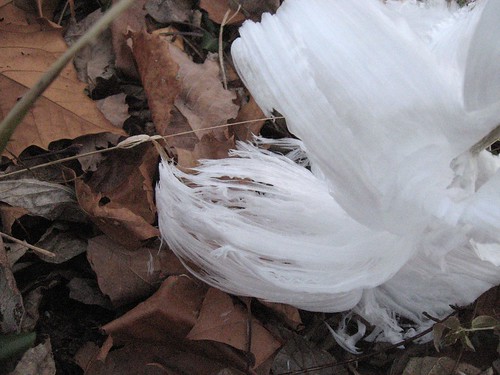
Fall is a wonderful time to find an amazing array of wildflowers on your national forests and grasslands. But before you venture out, take a moment for a sneak preview on the U.S. Forest Service’s Fall Colors web site for a few ideas to plan your visit
Early morning hikers who are out and about in the hardwood forests of the south-central and eastern United States may be lucky enough to observe the second flowering of dittany (Cunila origanoides). Also known as frost flowers, they are found in late autumn on crisp, frosty mornings. Though they are not true flowers, they are just as beautiful.
An herbaceous perennial wildflower, dittany is a member of the mint (Lamiaceae) family. It gives off an aromatic odor when the leaves are crushed, which explains its other common name—false oregano. The flower is small and lavender blue. It is found from late spring into early summer, generally in dry, mesic hardwood forests—a habitat with moderate or well-balanced moisture.
For frost flowers to form, the air temperature needs to be below freezing while the soil is still warm enough to allow for the transport of sap up into the plant’s stem. When the air temperature reaches the freezing point, the sap in the stem begins to freeze and expand. Tiny slits form in the stem, and thin ribbons of frozen sap emerge near the plant’s base. Occasionally, several slits form and multiple ribbons of frozen sap push out from the stem resembling flower petals, thus the name frost flower.

Only a few species of wildflowers have been identified as forming frost flowers. Besides dittany, frostweed (Verbesina virginica), yellow ironweed (Verbesina alternifolia), and longbranch frostweed (Helianthemum canadense) are known to produce frost flowers under the right conditions.
The right time of year for frost flowers to form is fast approaching. Now is the time to hit your favorite hiking trail and discover this wildflower. Here’s a hint: on a day when a frost is predicted, wake up extra early, bundle up, pack a camera and go back to the spot where you found a patch of these wildflowers and see if any frost flowers have “bloomed.” But be sure to go early as these frost flowers only last until the sun begins to rise in the East and air temperatures climb above freezing.
Happy trails on your frost flower search!
